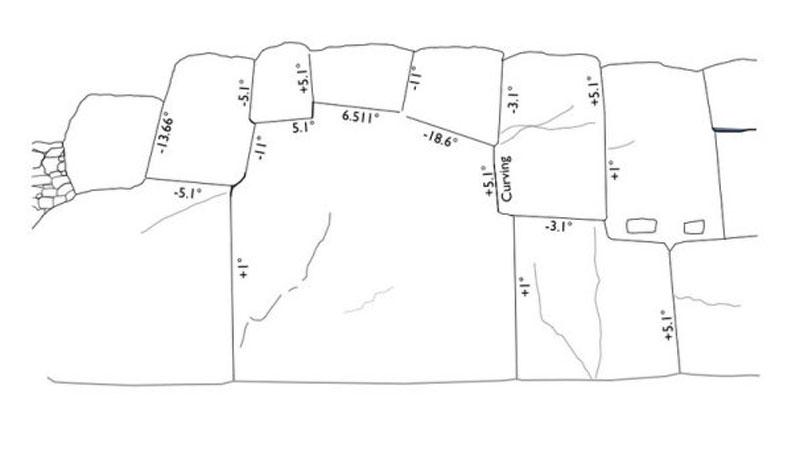
A discovery of this magnitude could easily rewrite not only our understanding of the Stone Age, but also world history.
Sacsayhuamán, located on the outskirts of the ancient Inca capital of Cuzco, is one of the most impressive and mysterious fortresses of the Andes and remains shrouded in mystery. The question of how the rocks of Sacsayhuamán were transported still remains unanswered. Could the angles of the stones possibly shed more light on the puzzle of Sacsayhuamán?
Dr. Derek Cunningham, author and researcher, presented a controversial and highly intriguing theory.
Based on his studies of the Sacsayhuamán complex, he concluded that the curious angles formed by these stones reveal ancient Inca knowledge of the astronomical alignments of the Moon, Sun and Earth, as well as knowledge of lunar and solar eclipses.

This may not be so surprising because many ancient temples have been astronomically aligned.
However, what Dr. Cunningham is suggesting is unorthodox, because his hypothesis revolves around the thought that our ancestors developed “writing” at least 30,000 years ago, in a geometric form of text that is based on the movement of the Moon and the Sun.
He states that this ancient astronomical text, identical to that observed in Sacsayhuamán, is also found in the caves of Lascaux and Chauvet in Europe, the Carved African skeleton of ishango, and a carved stone of approximately 30,000 years old found in the Paleolithic Site of Shuidonggou in China.
Dr Cunningham became interested in Sacsayhuamán when he first noticed a series of unusual land patterns located near some Scottish sites. This discovery led him to look at other old sites with the hope of finding some similarities, and he did.
He discovered that the angles of the stones of Sacsayhuamán reveal something extraordinary:
“Each astronomical value (there are 9 standard values in total) was chosen by ancient astronomers to aid the prediction of eclipses. These astronomical terms are a mixture of values that astronomers use to measure time (the sidereal month of 27.32 days) and values to determine when the Moon, Earth, and Sun align in nodes. This includes the use of the Moon’s 18.6-year nodal cycle, the 6,511-month draconian period between eclipse seasons, and also the 5.1-degree angle of inclination of the Moon’s orbit. The remaining values are typically half-values of various lunar terms, or values connected to the 11-day difference between the lunar and solar years.”

Dr. Cunningham believes that scientists should focus their attention on the hidden writing discovered in Sacsayhuamán and states:
“Now, substantial evidence has also been discovered that this archaic writing was used, perhaps almost continuously, until 500 years ago. Recently, analysis of the statuettes of Muisca Tunjo of Colombia uncovered evidence that they were built in exactly the same astronomical design as Bronze Age figurines discovered in Cyprus.
This discovery of such a possible ‘recent’ use of a Stone Age text then led me to take a new look around Inca architecture from the 15th century to the 16th century, which is famous for its fabulous and intricate interconnecting walls.
The question I asked was whether could the massive polygonal walls of Sacsayhuamán be aligned with the same astronomical values used in the Colombian Muiscan statuettes and the Atacama Giant of Chile? The surprising result is yes.”

Cunningham adds:
“What is powerful in this new theory is that it is very simple and easy to test. Obviously, additional work is required. Satellite images cannot take the place of direct fieldwork, and photographs posted online may have distortions, but so far the data obtained seems highly consistent.
Honestly, I don’t care if I’m right or wrong about this. All I’ve found so far is that the data is what it is. The potential of the idea of explaining a few things about so many places, both from the pyramids of Egypt to the Atacama Giant in Chile is obviously very controversial, and should be. But if correct, it could rewrite some aspects of our understanding not only of the Stone Age, but also of world history.
If, on the other hand, scientists prove this specific astronomical theory wrong, then we can move on, knowing that it has been sufficiently tested. What’s more intriguing is that a new full window has been opened for the past.”




















